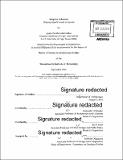Adaptive urbanism : shaping rapid growth in Nairobi
Author(s)
Malan, Andre De Merindol
DownloadFull printable version (24.54Mb)
Other Contributors
Massachusetts Institute of Technology. Department of Architecture.
Advisor
Alexander D'Hooghe and Brent Ryan.
Terms of use
Metadata
Show full item recordAbstract
Within the past half century many African nations regained independence and in the process, imported various development models from the Western World. Joan Clos, Under-Secretary General of the United Nations claims "it is now evident that all these models have failed to achieve the goals that African nations had set themselves". Considering these past failures along with rapidly increasing urbanization rates, a poor economic outlook and on-going vulnerability to natural disasters, the need for reconsidering urban strategies is more pressing than ever. The relatively nascent state of urbanization on the subcontinent should be see as an opportunity to embrace new paradigms of urban development. No African city is more poised to become a test bed for change than East Africa's center for innovation and globally connected capital of Kenya - Nairobi. The thesis proposes a project for the Nairobi metropolitan region. A current population of 8 million people is set to double by 2050. And, by some estimates, up to 60% of these people currently live or work outside of the formal sector. The project unfolds across scales, from global and regional concerns down to housing clusters. Richard Neuwirth's notion of harnessing the power of the informal plays out here by carefully calibrating how much public participation or indeterminacy is built into the interventions at each scale. Housing types and clusters have endless permutations while the regional plan is centrally instated. The design project resonates with the New Town movement in scale and ambition, specifically in cases where these ideas were exported to the Global South in the fifties and early sixties. It also embodies a critique of these projects Utopian visions that sought to 'solve' the 'problem' of the city and the totalizing approach these took.
Description
Thesis: S.M., Massachusetts Institute of Technology, Department of Architecture, 2016. Cataloged from PDF version of thesis. Includes bibliographical references (page [103]).
Date issued
2016Department
Massachusetts Institute of Technology. Department of ArchitecturePublisher
Massachusetts Institute of Technology
Keywords
Architecture.